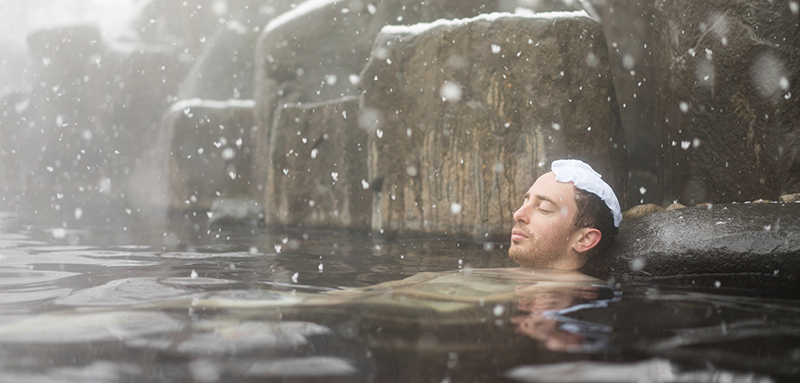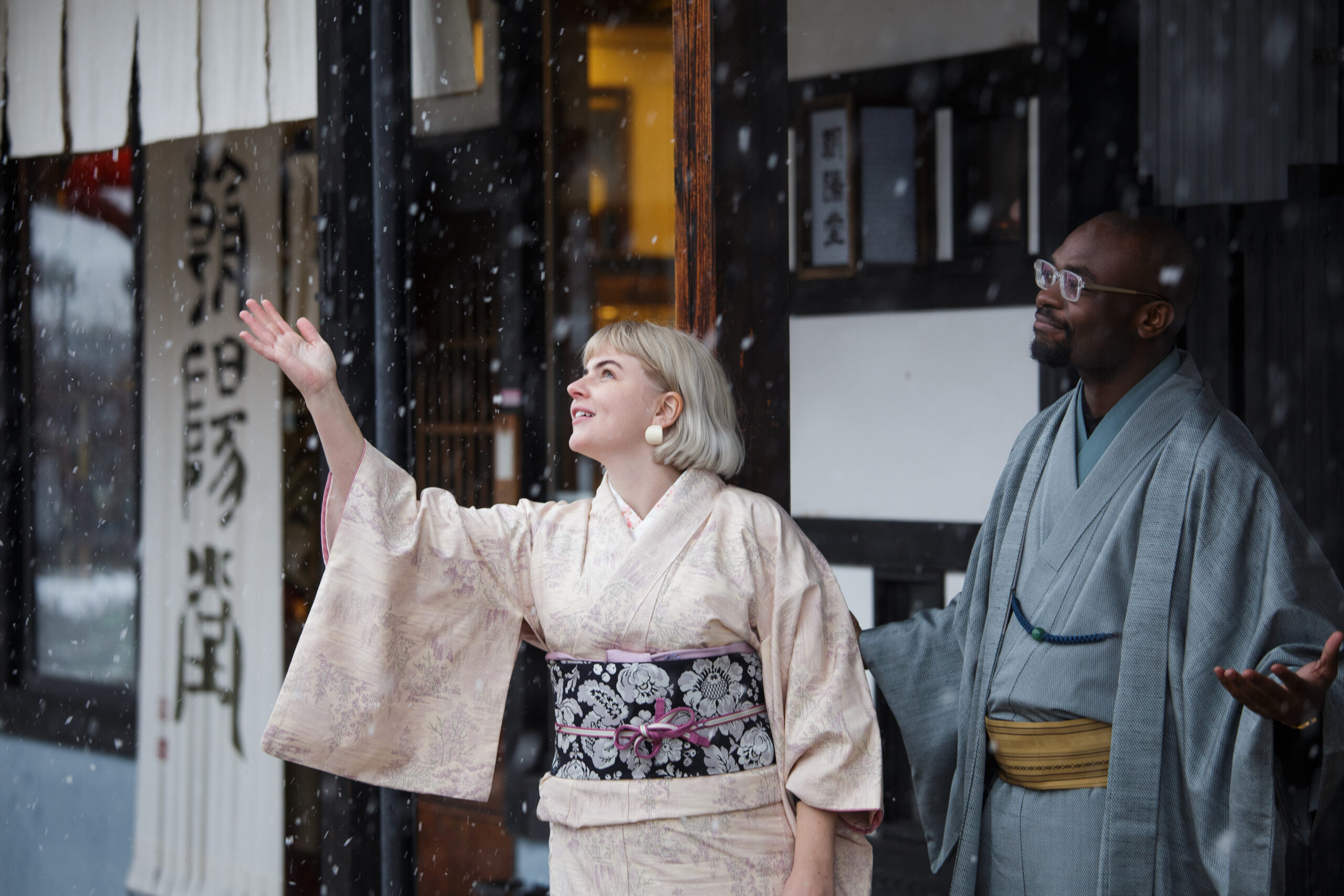By Matt Klampert
Those who visit Japan from the West will probably get the impression of the Japanese being especially conscious of the change in seasons, with seasonal menus at ryokan hotels, seasonal festivals, and more. That being said, many travelers often come to Japan either in the hot and humid summers, or visit famous winter spots like Hokkaido or YUKIGUNI, which traditionally have very heavy snowfall. Perhaps less well known is Japan in fall during kouyo.
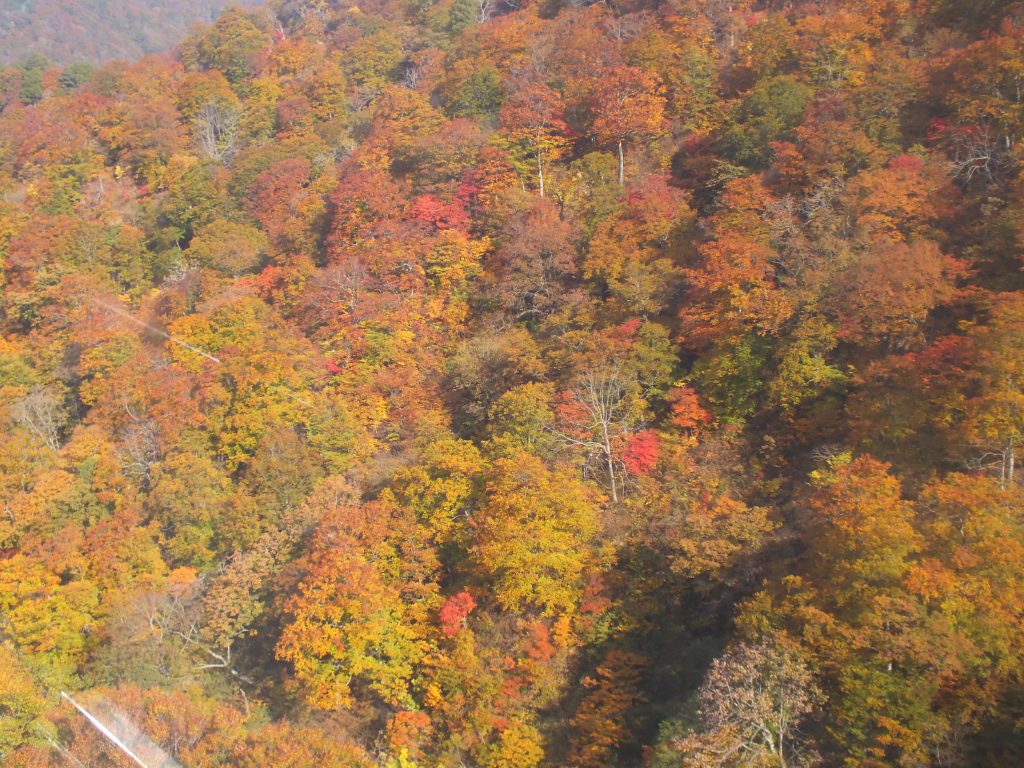
What is Kouyo?
Kouyo is the time in fall when the leaves change color. During this period, people like to leave the cities for a time and go on hikes, visit onsen, and appreciate the beautiful natural scenery of Japan. Being only 70 minutes from Tokyo, Snow Country is actually a great place to do this. The mountains that are so nice to ski on in winter are well worth seeing in the autumn as well. Here are some of our personal recommendations for fall fun.
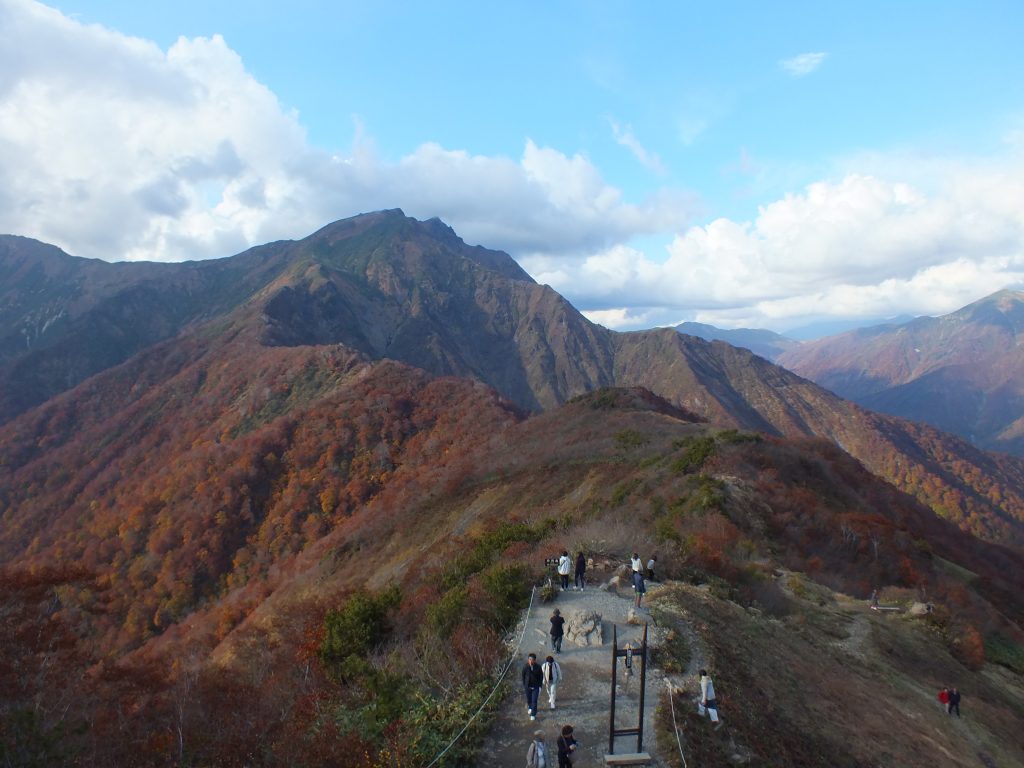
Hiking Mt. Tanigawa – the symbol of Minakami
No matter where you are around Minakami, you are bound to see something relating to Tanigawa. It is one of the most famous mountains in Japan, and this is especially true in fall when the leaves change. The fastest way to get to Tanigawa is by way of Doai, the famous underground “mole station”. From there you can get a bus to the trailhead, or go up on the Tanigawa Ropeway to Mt. Tenjindaira. From here, you can choose to take an additional ski lift to Tenjin-toge, or enjoy an approximate 20 minute walk of rolling hills and great views of fall foliage. When you get to the top there is a picturesque Tenmangu Shrine, a small observatory and a café where you can buy some drinks.
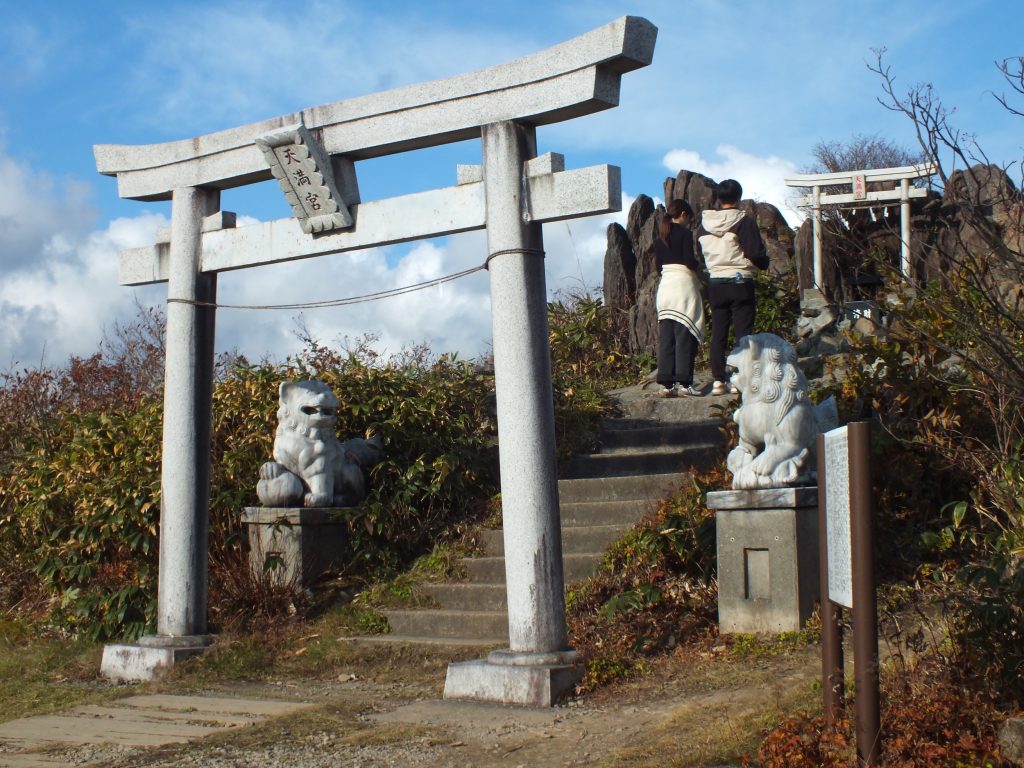
From the observatory, there are a bunch of different trails you can go on, including Okinomimi Peak, and also toward Tanigawa Onsen, which is home to the eco-lodge Tanigawa Ryokan and the Tenichi Gallery, which we wrote about HERE. Even though Mt. Tanigawa’s paths are travelled frequently, it is still very important to take certain safety precautions, such as bringing a map, adequate footwear and water, and registering your travel itinerary. For more info on mountain climbing in YUKIGUNI, click HERE.
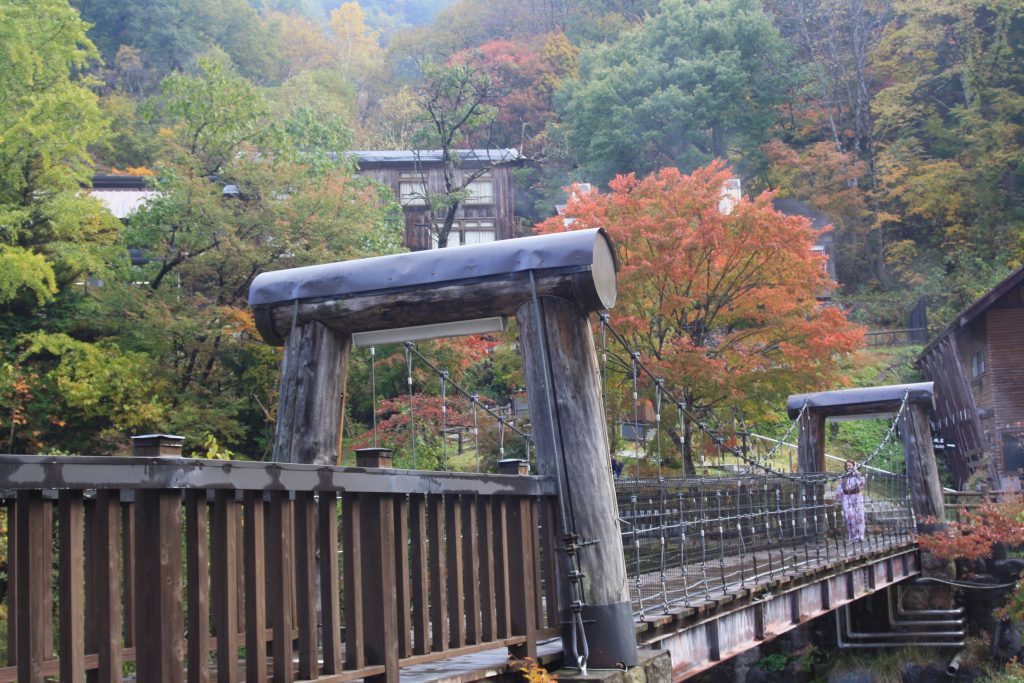
Relaxing in the great outdoors at Takaragawa Onsen
One of the charms of Japan’s bathing culture is being able to relax outside in a rotenburo, and the fall is the best time to do this while taking in the endless red and yellow leaves. One of the largest outdoor bathing areas in Japan is located at Minakami’s Takaragawa Onsen. Takaragawa Onsen is a “hidden onsen” located deep in nature where there is up to 2 meters of snow during winter. The normal time for kouyo in this area is from late October to mid-November. The hot spring at Takaragawa has been frequently featured on Japanese news programs and well-known movies like Thermae Romae, which was also filmed at another Minakami hot spring, Hoshi Onsen Chojukan.
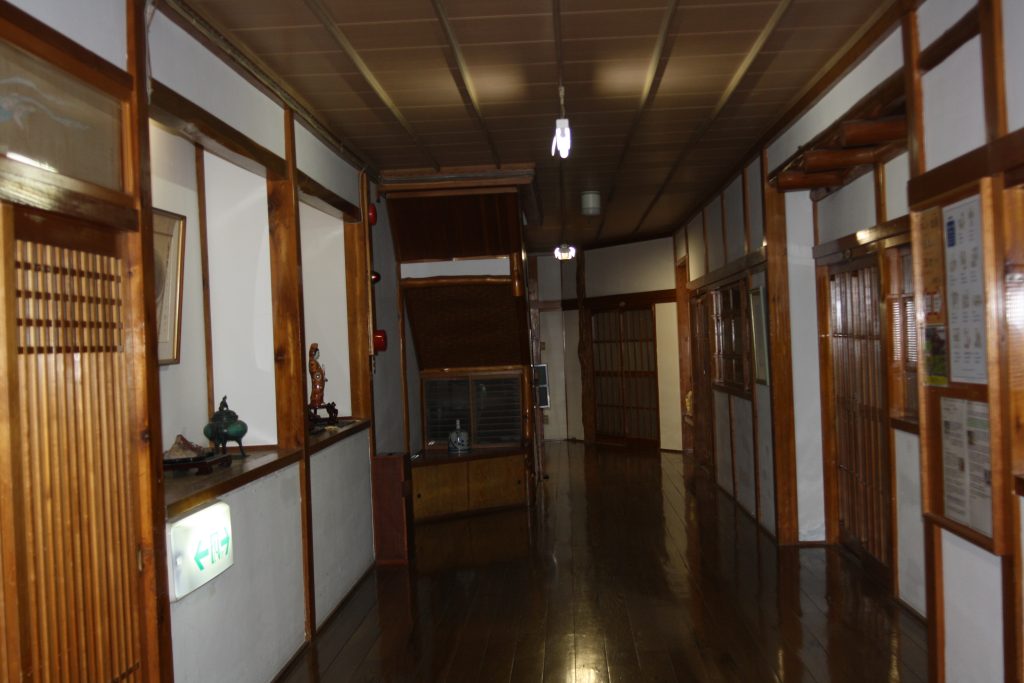
Within Takaragawa Onsen is Osenkaku, the main lodging area. It is a five-floor ryokan with 42 rooms across 3 interconnected buildings. Despite the size of the inn, the rooms are very spread out, spacious, and comfortable. Takaragawa Onsen Osenkaku is busiest in fall, when guests come in droves not only from around Japan, but internationally. The ryokan is quite English friendly, and bathing rules and manners are clearly written. For example, the outdoor baths require the use of special bathing clothes for both men and women.

Speaking of these famous baths, there are four separate baths at Takaragawa Onsen. Three of these are for mixed bathing, the biggest being the Kodokara bath. This spacious bath is the size of a whopping 200 tatami mats! The Maya bath is exclusively for women. The baths at Osenkaku have been used for nearly a century thanks to the supposed curative properties of the hot spring water: they can help ease the discomfort of those suffering from neuralgia, arthritis, or rheumatism. Thanks in a large part due to these baths, visitors to Japan voted Gunma as one of the Top 15 Prefectures of Japan. The scenery surrounding this bathing area is also a sight to behold, with beautiful bridges, moss-covered paths, and stone statues all around the steaming water.
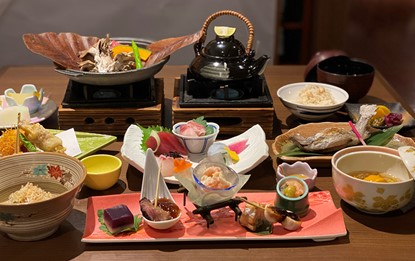
No visit to a ryokan is complete without some hearty country cuisine, and at Takaragawa Onsen Osenkaku they specialize in fresh fish such as char as well as local Joshu beef. One of their original specialties is beef houbayaki with piquant nanban miso.
Guests can reach Takaragawa Onsen by reserving a direct shuttle bus from either Jomo Kogen or Minakami Station. Be sure to grab some local gifts like Minakami’s own tofu ice cream from the gift shop before you go!
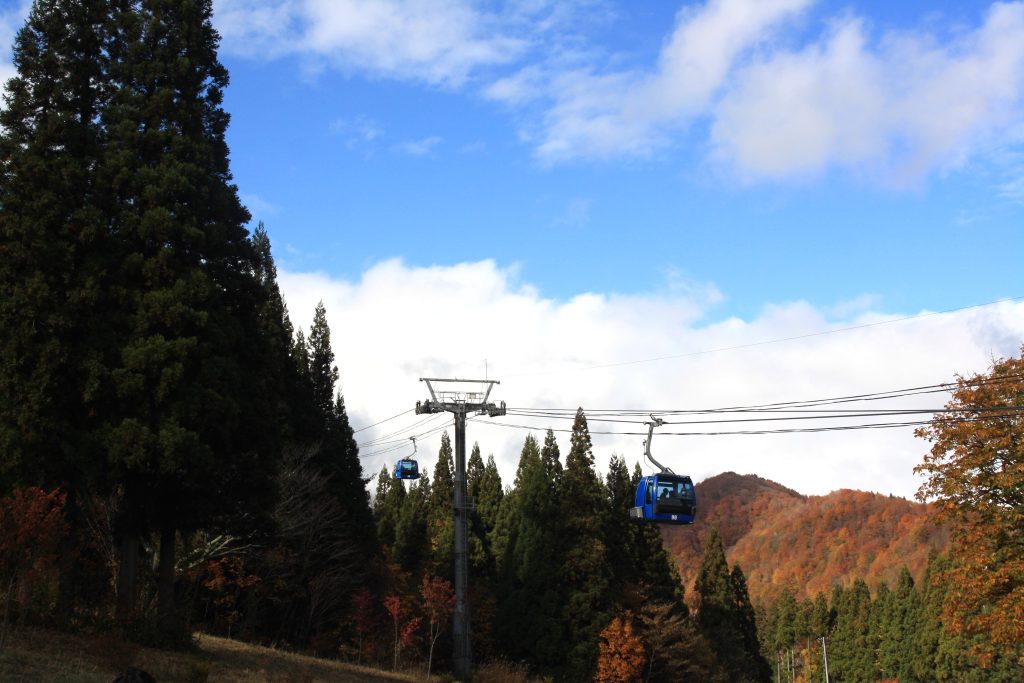
See the fall colors from a “Dragondola!”
Yuzawa’s Naeba area, besides being a bustling ski resort in winter, has two big claims to fame during Japan’s green season: the world-famous Fuji Rock Festival in summer, and the Dragondola! The Dragondola has the distinction of being the longest gondola ride in Japan, and one of the longest in the world! From your cable car up in the sky you can get great views of both Mt. Naeba and Mt. Tashiro. The entire length of the gondola is approximately 5,500 meters, and the ride takes about half an hour. Each car seats eight people, and is even pet friendly!
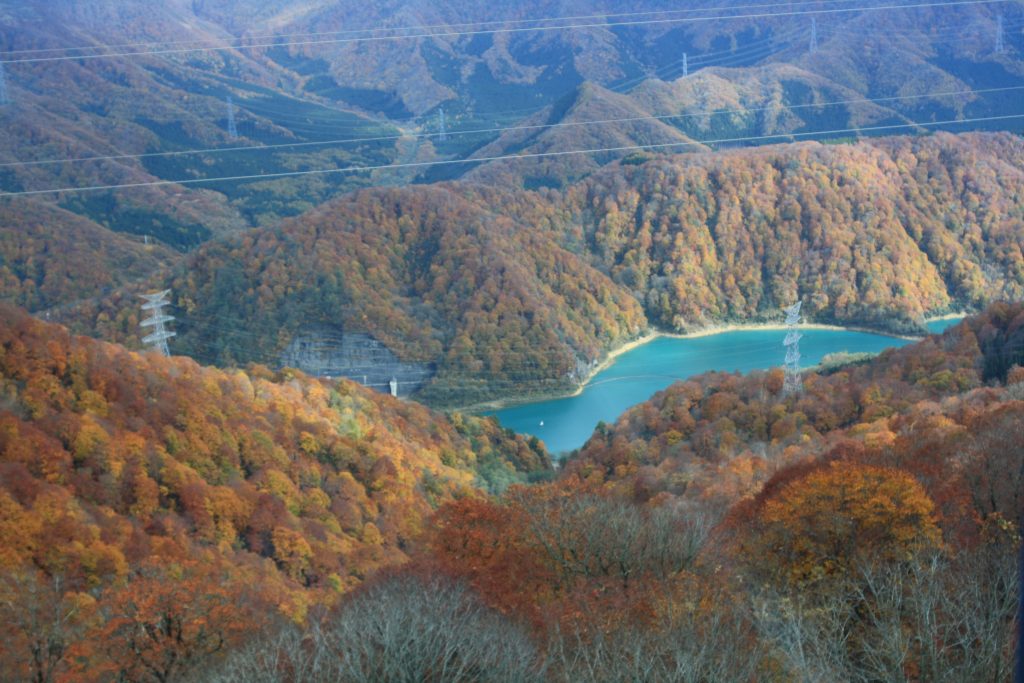
The most convenient way to visit the Dragondola is by shuttle bus courtesy of the Snow Country Tourism Association. The bus runs through October and November, and includes a voucher that can be exchanged for tickets to the Dragondola and the Tashiro Ropeway. Fare for the Panorama Lift to the summit is not included, but is not necessary to access the Dragondola.
Reservations for the Snow Country Tour Association’s Dragondola Tour are available online, and cost 5,500 yen per adult. Reserve early for weekend trips, as seats fill up quickly during the peak season. You will be given information regarding the bus schedule, including departure times. Click HERE for more information.
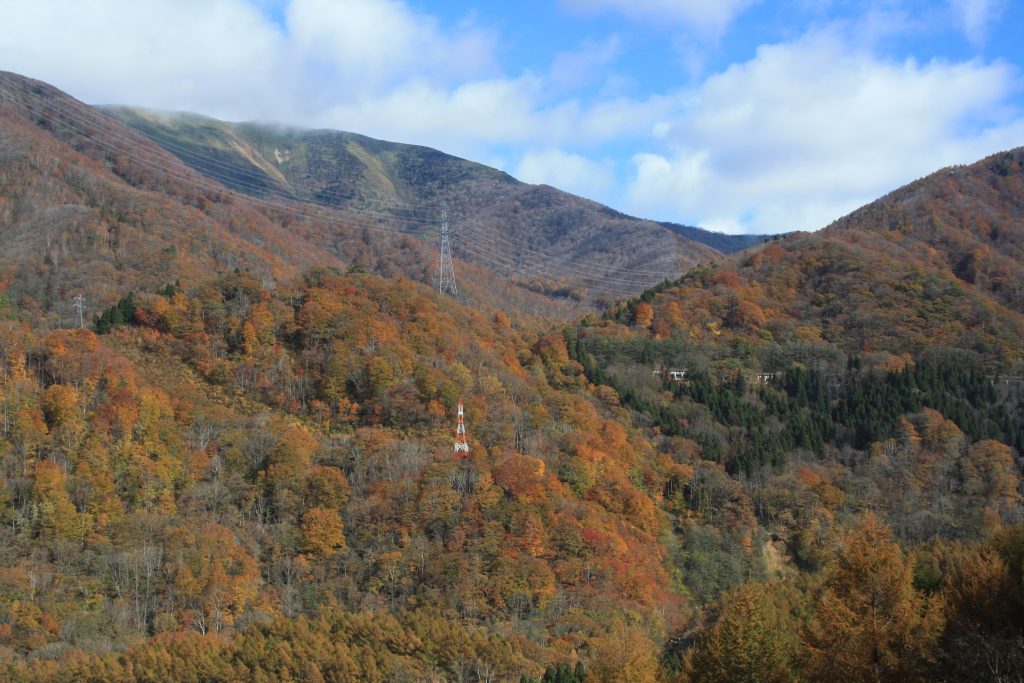
Things to see, do, and eat!
Once you get off the shuttle bus at the Tashiro ski area, you will then take the ropeway up to the slopes. Some of the ski lifts here are operational even during the green season, and you can admire the beauty of the area from above, which is said to resemble the back of a giant dragon. You can also freely wander the trails between Tashiro and Naeba, though some trails may not be accessible at all times. Aside from traversing the area on foot, you can also rent cycles on the mountain top, or even drive around in a buggy! If you are interested in spending a night among the stars, you can also camp out in the Tashiro area.
And then of course is the reason why you are here, the Dragondola! The Dragondola runs regularly between 9 a.m. to 3 p.m., giving you panoramic views over Mt. Tairappyo and Lake Futai, which is said to change between seven different colors depending on the weather.
While the gentle slopes surrounding the Dragondola are a great place for a picnic, there is also a restaurant and food trucks to choose from around the Tashiro and Naeba grounds. Enjoy Japanese food like kushiage, tempura, nabe, or mochi and crepes for those with a sweet tooth. There are also other food stands located by the exit to Dragondola.
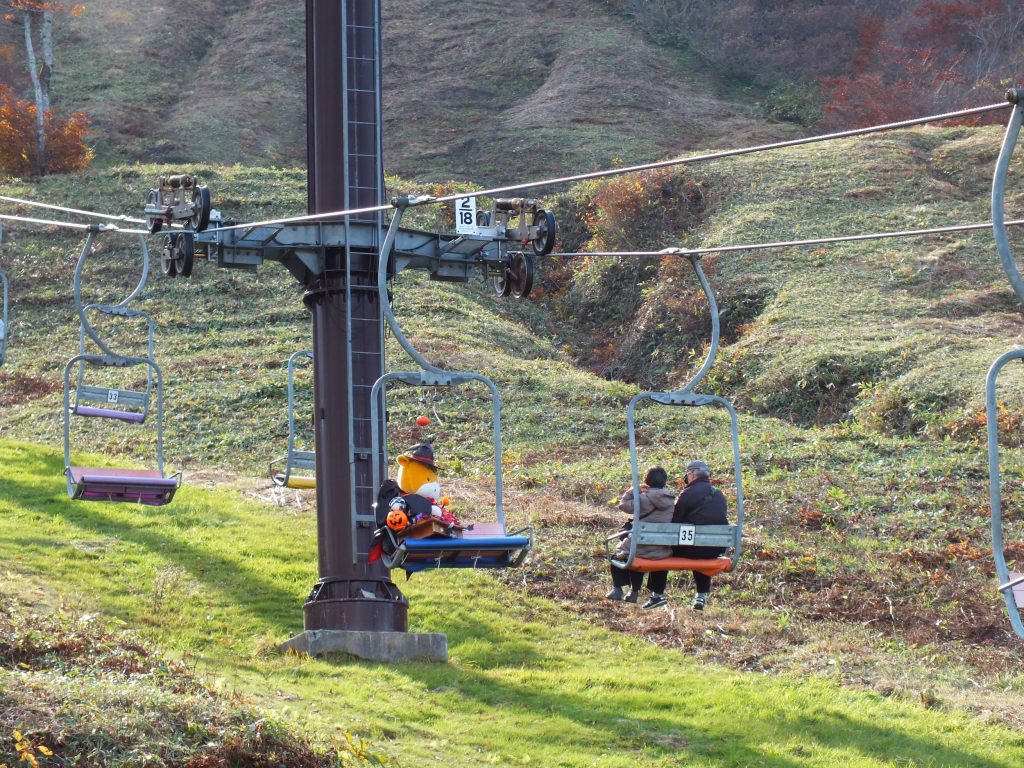
Information for Travelers
Tanigawa Ropeway
Address: Yubukiyama National Forest, Yubiso, Minakami Town, Tone District, Gunma Prefecture, 379-1728
Cost: 3,500 yen for round trip to Tenjindaira and Tenjin-toge observation deck
Phone: 278-72-3575
Takaragawa Onsen Osenkaku
Address: 1899 Fujiwara, Minakami Town, Tone District, Gunma Prefecture 379-1721
Reservation Information available HERE
Naeba Dragondola
Address: 202 Mikuni, Yuzawa Town, Minamiuonuma District, Niigata Prefecture 949-6212 (Naeba Prince Hotel)
Cost: 3,800 yen (tickets only)
Phone: 025-789-2211 (Naeba Prince Hotel)
025-785-5353 (Snow Country Tourism Association)

